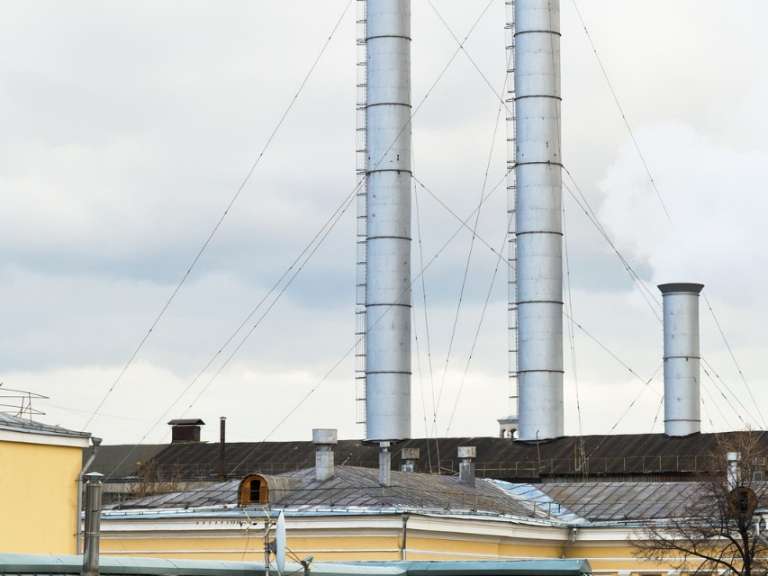District Heating Systems: Meeting the Challenge
Robert RapierIncreased adoption of district heating systems offers many cost-saving benefits, but it isn't without challenges.

As global energy demand continues to grow, many countries face the challenging prospect of meeting this demand while simultaneously reducing carbon dioxide emissions. District heating systems are a powerful tool for reducing the carbon dioxide emissions associated with energy production.
District heating involves the distribution of an energy source through a piping network to multiple buildings. These systems consist of a thermal energy-generating plant that produces hot water or steam, a piping system for distribution, and building interconnections such as meters, valves, and pumps. Thermal energy is delivered at conditions suitable for use by the buildings connected to the district heating system. This energy can be generated using boilers or combined heat and power (CHP).
The concept goes all the way back to the hot water baths and greenhouses of ancient Rome. Today, modern systems are prevalent across Russia, China, and northern Europe—particularly Scandinavia—according to Elsevier.
District heating systems debuted in the United States in the late 1800s; today, there are systems operating in all 50 states. Nevertheless, the United States lags far behind Europe in this area. There are several reasons for that. The United States has a lower population density than Europe, and historically hasn't aggressively promoted the legislative framework that would encourage implementation of these systems (in contrast to Europe). The relatively warmer climate in the United States is also a factor. Most district heating systems in the United States are located in northern cities like Minneapolis, Milwaukee, and Detroit, and they are especially popular heating options on college campuses.
District heating is most attractive in areas with a sufficiently high density of customers and a need for heat during the winter. One of the challenges in growing adoption of these systems lies in educating potential customers about the benefits.
The most obvious benefit is the high energy efficiency of these systems. The efficiency of district heating that incorporates CHP is well over 75 percent—more than double the efficiency of a thermal electrical generating plant. This higher efficiency results in fewer emissions per unit of energy delivered.
District heating systems also save building space by housing the equipment typically used to heat the building in a separate location. This can provide savings on maintenance and
The market share for district heating in the EU was about 12 percent in 2010, but the International Energy Agency (IEA) projects that this could increase to 30 percent in 2030 and 50 percent in 2050. The IEA estimated that this would require an investment of 500 billion euros, but would create 220,000 jobs per year until 2050 and result in annual fuel cost savings of 30 billion euros.
The IEA further estimates that about 1.3 percent of commercial buildings in the United States are heated using district heating networks, and that there has been significant growth since 2000. The IEA identified several challenges in the United States that need to be addressed to ensure robust future growth. A lack of uniformity in interconnection standards makes it difficult for equipment manufacturers to design and produce modular packages, creating potential hurdles for timely project development. Inconsistent rate structures create hurdles for developers, who have to learn how to improve operations under a variety of different structures. Adoption of district heating standards could address both problems.
Customer perceptions must also be addressed. District energy is not typically part of an energy user's core business, and commercial customers do not typically have the in-house expertise in energy procurement and management to understand the opportunities afforded by these systems. Asset managers must engage and educate potential customers about the benefits, particularly in densely populated urban areas.
But even among existing systems, there is room for improvement. Asset managers face the challenge of operating these plants to primarily meet heating demand during winter, while running the plants for efficient electricity production during summer. In winter, the key performance indicators (KPIs) for these plants are focused on improving fuel utilization efficiency to increase steam extraction for heating. Electricity generation is a secondary driver, but an important one for meeting the objective of increasing combined steam and power revenue. Modern plants have efficiency improvements that reduce variable cost, lower emissions, and improve economics between these peak and off-peak seasons.
District energy systems are growing in popularity, especially across Europe, Asia, and in the United States. A key challenge in growing the adoption of these systems is educating new customers about the benefits, as well as educating existing asset operators about the benefits of upgrading their plants.
Designing a strategic, data-driven power plant outage schedule can save money and stress.
Will the responsibility of intermittent energy source balancing fall primarily on batteries and energy storage, or can digitized thermal power plants take on some of the task?
As renewables are on the rise, operational flexibility is paramount to the continued success of all power-generation plants.